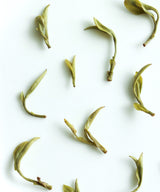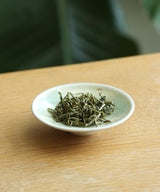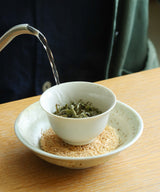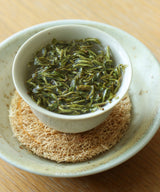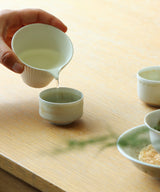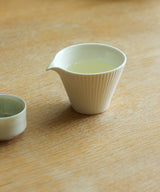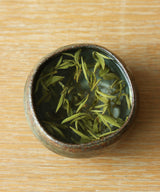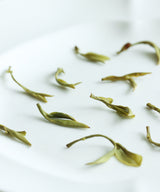Pingyang Yellow Broth 平阳黄汤
明前平阳黄汤
Harvest
March 29, 2022
Origin
Wenzhou, Zhejiang
Back in the Qing Dynasty, Yellow tea from Zhejiang Province was used to make traditional milk tea. Each member of the Emperor’s family had their own milk cows. The recipe for one batch of milk tea went: 1.5kg of fresh milk, 100g of yellow tea, two scoops of cream, 50g of salt, and water.
Pingyang is a small county in Wenzhou city of Zhejiang Province. There are no records of any other Yellow tea from Zhejiang Province aside from Pingyang Yellow Broth, so it is highly likely that the Yellow tea used in the palace to make milk tea was Pingyang Yellow Broth.
However, by the 1930’s this unusual tea, Pingyang Yellow Broth, had slowly disappeared, mostly due to the fact that the methods for crafting it had been passed down between generations of tea farmers orally, within their families; the instructions for making this tea had never been documented or recorded in books. In the 1980’s, local technicians from the Department of Cultural History attempted to make Pingyang Yellow Broth again, and after several years of experimentation and working with generational tea farmers, they were able to recreate it.
This Pingyang Yellow Broth comes from Mr. Huang’s family. Mr. Huang’s father used to craft small batches of Yellow Broth, making Mr. Huang an apt farmer to participate in this tea’s revival.
Mr. Huang’s heritage tea garden is situated in the most central region of Pingyang, at 1300 ft elevation. The trees are an indigenous and heirloom varietal, some more than a century old. Following the strict picking standard of one-bud-one-leaf, the freshly harvested leaves are pan fried and roasted over charcoal, before being wrapped in rice paper for the “meng huang” or “smothering” stage, essential to the making of a Yellow tea. The tea stays in these rice paper parcels for 2 hours, after which they are roasted over charcoal again. This Pingyang Yellow Broth goes through five rounds of the “smothering” process, resulting in a rich and viscous tea with the distinct, reductive characteristics of a Yellow tea.
This remarkable tea starts with notes of asparagus, nettle and fiddlehead in the first 2 infusions. From the third infusion, it has beautiful floral notes of jasmine.
. . .
Brewing guide
The key to brewing this tea is to use 90°C water and very fast infusions, starting at 10 seconds.
| Tea | 4 g |
| Temperature |
90°C |
| Water | 120 ml |
| Steep time | 10 - 60 sec |
| No. of infusions | 10 |

